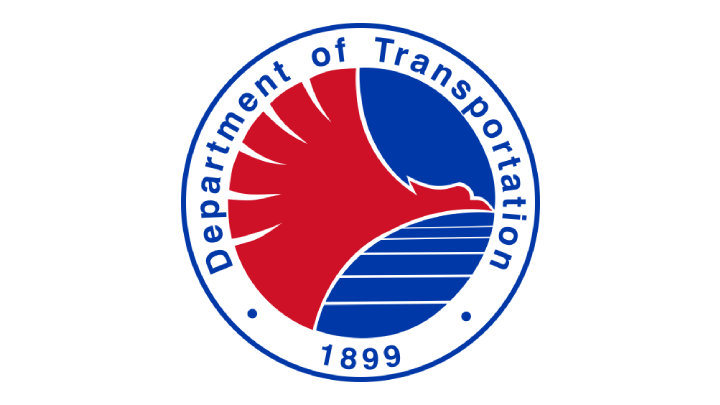The Department of Transportation (DOTr) and the Inter-Agency Task Force for the Management of Emerging Infectious Diseases (IATF-EID) have set transport protocols and guidelines regarding road, aviation, maritime, and railway transport for the General Community Quarantine (GCQ).

Here is the breakdown of the guidelines:
Table of Contents
Aviation

These flights are allowed to operate under the GCQ:
- Government and military flights
- International flights subject to existing IATF-EID/BOQ protocols
- Air ambulance and medical supplies
- Flight check and weather mitigation flights
- Maintenance and utility flights
- Emergency flights; domestic flights coming to and from provinces and cities under GCQ, subject to required airport clearances and flight plan approvals, as may be applicable
- Other approved flights by the IATF-EID
Passengers, personnel, and everyone involved is required to abide by these rules:
- Wearing face mask, face shield, or other Personal Protective Equipment (PPE) is compulsory for all individuals.
- Passengers with valid travel documents shall be allowed to enter airport premises. Checking of body temperature is mandatory upon entry.
- Social distancing measures shall be strictly observed inside the airport premises.
- Security procedures shall be done through no contact means but not limited to the use of walk-through x-ray machines, portable scanners, handheld metal detectors, among others, effectively limiting close contact security screening by means of pat-down/manual frisking to exceptional instances/situations.
- The regulation covering the maximum allowable hand-carried bags/items shall be strictly implemented.
- COVID-19 Rapid Testing facilities installed at all airports are managed by qualified healthcare providers.
- Disinfecting facilities established in terminals shall be equipped with alcohol and/or soap. Foot baths shall also be installed in all entry and exit points of passengers and airport personnel, including boarding bridges and/or similar areas for passenger embarkation/disembarkation to and from the aircraft. All airport facilities and equipment, including lavatories, frequently touched surfaces, wheelchairs, trolleys, countertops, etc., shall be regularly disinfected and sanitized.
- Safety precaution posters and other health guidelines shall be displayed at strategic places. Alert bulletins shall be shown through airport flight information display systems, and via public announcements.
- Digital enablers (websites/Mob Apps/On-ground Kiosk) and communication, as well as education programs through social media, shall be utilized to inform and engage with passengers.
- All arriving and departing passengers are required to electronically fill-out Health Declaration and Passenger Locator Forms.
Maritime

- In accordance with the IATF and DOH protocols, passenger capacity in ships and other passenger vessels shall be reduced to 50%.
- Upon entering the port premises and terminals, all individuals must fill-out and accomplish health protocol forms. Mandatory checking of body temperature will also be conducted upon entering the terminal and embarkation on ships.
- Social distancing measures shall be strictly observed inside ports, ships, and other passenger vessels, at all times.
- In port facilities, particularly areas for frontline services, such as passenger terminal buildings (PTBs), port integrated clearing offices, and other areas, physical distancing shall be observed.
- In order to maintain cleanliness and sanitation, all disinfecting facilities, such as foot baths, handwashing stations with alcohol and/or soap, and sanitation tents will be established at all entrances of terminals, ports, in ships, and other passenger vessels.
- Wearing of Personal Protective Equipment (PPEs) is mandatory. Upon entry of ports, terminals, and passenger vessels, all individuals shall undergo disinfection procedures, such as footbath, among others.
- To ensure that all premises are regularly cleaned and sanitized, thorough disinfection of ships, passenger vessels, ports, terminals, and facilities, as well as various equipment, will be conducted regularly.
- Information dissemination on hygiene and sanitary practices will be shown to passengers through different media platforms in PTBs, and other strategic locations of the ports and terminals.
Road

- All permitted PUVs, transport terminals, and operators must follow three essential components dictated in the protocol/guidelines – safety, capacity, and coverage/scope.
- Safety refers to guidelines that reduce contact, transmission, and spread of the virus through the mandatory use of face masks and gloves for drivers. Thorough disinfecting practices of vehicles, terminals, and even among passengers are also required.
- Capacity and passenger load factors will be required for each mode of transportation to ensure that physical distancing is followed.
- Passenger load for public utility buses (PUBs) and public utility jeepneys (PUJs) should not exceed 50% or half of the vehicle’s capacity, excluding driver and conductor.
- For UV Express and taxis, the passenger load should not exceed two passengers per row, except for the driver’s row where only one passenger is allowed.
- Tricycles must not exceed one passenger in the side-car, while back riding is not allowed.
- Private cars and motorcycles will be allowed to operate for essential travels, as defined by the Inter-Agency Task Force (IATF).
- Private cars will only be allowed one passenger to occupy the front passenger seat, while front-facing seats shall not exceed two passengers per row.
- Motorcycles are prohibited from having back ride passengers. Meanwhile, the use of bicycles and similar devices are also highly encouraged, and LGUs are also encouraged to identify bike-lanes or bike-only roads.
- The mode of PUV that will operate in each route in the GCQ areas will be guided by the number of passengers that will be transported.
- PUVs with higher passenger capacity, such as buses, will be prioritized, consistent with the Department Order No. 2017-011.
- In areas where buses are not enough to serve the actual passenger demand, or the road characteristics will not permit their operations, PUVMP compliant PUVs are the next priority.
- In areas with unavailable buses and modern PUVs, PUJ’s and UV Express may operate.
- In areas where no other mode of public transportation is available, tricycles may be permitted to operate as determined by the LTFRB in coordination with the corresponding LGU.
- The LTFRB has already finalized the mechanism for issuing special permits to allow PUVs to operate. Drivers and operators may apply for the permit, free of charge, through LTFRB offices or by email through LTFRB’s online channels.
- Private vehicle owners, PUV drivers, and operators, and private or public transport terminal operators who violate the guidelines will be sanctioned and penalized.
Rail

- Operations of LRT-1, LRT-2, MRT-3, and PNR will resume with limited capacity after the lifting of the Enhanced Community Quarantine (ECQ) imposed in Metro Manila, or on May 16, 2020.
- Upon the resumption of operations, all rail lines will observe the March 14, 2020, DOTr Guidelines on Community Quarantine, as well as additional health and safety measures pursuant to IATF and DOH Guidelines.
- 1-meter social distancing should be strictly observed inside the trains and stations. The presence of markings, signages, tarpaulins, and other logistics will be utilized to ensure its firm implementation.
- Pursuant to DOH Guidelines, the following passengers will not be allowed to enter the station:
-
- Passengers who are not wearing proper face mask
- Passengers showing COVID-19 symptoms or with a registered body temperature of 37.8°C or higher
- Senior citizens, passengers aged 0-20, and pregnant women due to their susceptibility to COVID-19
- Regular disinfection and sanitation of train interiors, station premises, and facilities will be conducted. In addition, handwashing or disinfectant stations will be installed to adhere to sanitary measures set by DOH.
Lastly, the DOTr also stressed that there would be no public transportation in areas under the extended enhanced community Quarantine (ECQ), including Metro Manila.
























